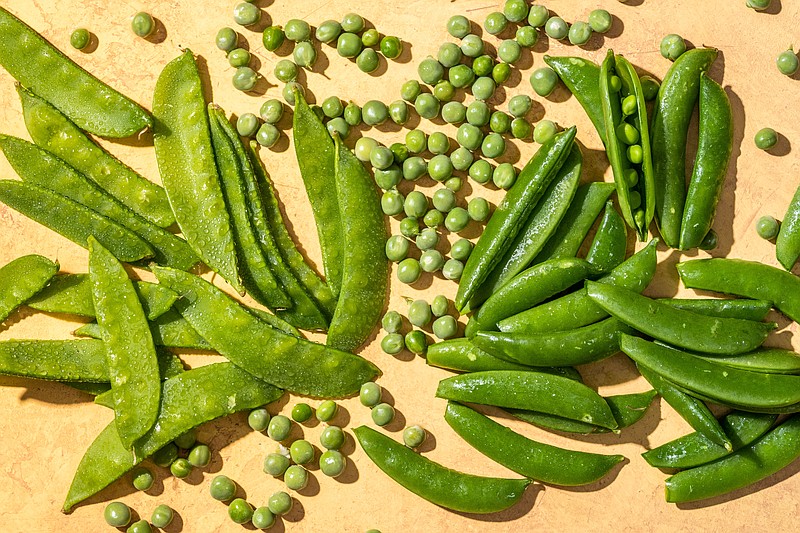Peas are typically one of the first crops planted at the start of spring, when there's still a chill in the air. As such, they're one of the first crops to show up in farmers markets and they can be available into the fall, depending on where you live. Here's what you need to know about how to make the most of the bounty.
Peas comes in three varieties: shelling, snow and snap.
Shelling peas. As the name implies, this type needs to be freed of their inedible pods before consumption. The inner seeds, sometimes called garden, sweet or English peas, are what many think of when we encounter the word "pea" without any other modifier.
Snow peas. Part of the appeal of snow peas is that the pod is edible. These flat pods are picked when the seeds within are just beginning to take shape, but if allowed to mature further, the pod becomes tough and inedible, requiring the seeds to be shelled to be eaten.
Snap peas. A cross between shelling and snow peas, snap peas have an audible snap when fresh and broken in half. Like snow peas, the pods are also edible and can sometimes have seam fibers that impede immediate enjoyment.
As with most vegetables: the fresher, the better. With peas in particular, their sweetness starts to fade as soon as they're picked. As such, it's best to use them within just a few days for maximum flavor; although you could blanch and freeze the fresh peas to prolong their life. In selecting specimens, reach for firm, green pods, keeping in mind that smaller peas are sweeter and more tender than larger ones.
For shelling peas, wait to free the seeds from their prison until just before using. To do so, crack open the pod with either your fingers or a paring knife and run your thumb along the inside to guide the seeds into a bowl. If a recipe calls for freshly shelled peas, a good general guideline to know is that 1 pound of peas in their pods yields approximately 1 cup of shelled peas.
With snow and snap peas, trim the ends and remove seam strings (if present) before eating them however you see fit. In addition to stir-fries, snow peas can also shine in salads, either whole or cut into strips on the bias. (The same can be said of snap peas in salads.)

